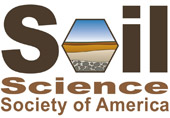Precision Zonal Management Creates within-Field Zones of Functional Specialization: Evidence from on-Farm Sites in the US Corn Belt.
See more from this Division: OralSee more from this Session: Climate Change Adaptation and Mitigation 2B
Cereal crop production in the Upper Midwest faces the compound environmental challenges of pervasive soil degradation, nutrient resource losses, and more frequent extreme weather. These challenges interact to destabilize production and create unacceptable environmental costs. Precision zonal management (PZM, e.g. ridge till, strip till) is a promising land management class that may be able to stabilize crop productivity and increase the value of ecosystem services that row crop agriculture delivers, while avoiding the agronomic and economic costs of traditional conservation management practices.
We hypothesized that PZM achieves this standard of stable productivity and low environmental impacts by creating zones with distinct soil functions, zones that conventionally managed fields lack. Moreover, this zonation should develop over time because, unlike conventional management, PZM creates row and furrow environments with contrasting temperature, water, and nutrient availabilities. We predicted that the PZM furrows would develop microbial communities, microbial biomass, and enzymatic activities that indicate nutrient stabilization and organic matter production, but in the row these same indicators would suggest a high capacity for nutrient mineralization. To test this hypothesis, we sampled soil from 24 on-farm sites in Minnesota and Illinois that have been under continuous, conventional management by ridge till or chisel plow for up to fifty years. We then compared both microbial and soil characteristics of the row and furrow area to determine whether functional differences exist between these zones in ridge till systems but not in chisel plow systems.
Initial results support our hypothesis that PZM supports greater zonal specialization than conventional, non-zonal management. Late-season indicators of nutrient mineralization capacity - chitinase and cellobiohydrolase activities and microbial biomass - are greater in ridge till row positions than in the furrow, but lower in chisel plow rows than furrows (p < 0.05). Furthermore, microbial community dissimilarity between locations grows as ridge till fields age to exceed row-furrow dissimilarity in chisel plow fields (R2 = 0.387 and 0.564 for bacteria and fungi, respectively). Environmental characteristics match these zonation trends, with immobile nutrients (Zn, Fe, and P) generally being more concentrated in ridge till rows. These results suggest that PZM can create functional zonation at a sub-field scale, which may improve the efficiency and stability of row crop production.
See more from this Session: Climate Change Adaptation and Mitigation 2B
